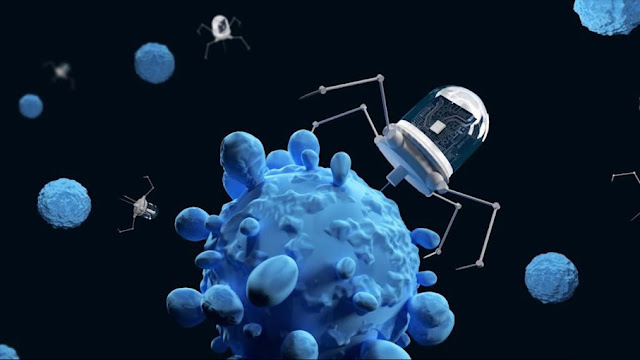You may have heard the term nano a lot lately. The
study of the world we live in in a much, much smaller, that is, nano-scale is
called nanoscience, and production in the light of the data obtained as a
result of these examinations is called nanotechnology. All these efforts have
one goal, which is to change the world. Because what can be done with these
studies is limitless.
Nanotechnology and nanoscience studies are quite newThat's
why it still remains a mystery, at least for us. The rules we know are not
valid in the nanoworld. By exploring this new world in depth, scientists and
engineers aim to shape our future day by day at the nanoscale.
What is nanoscience and
nanotechnology?

The study of structures and materials on an
ultra-small scale is nanoscience. Since nanoscience is an interdisciplinary
field, scientists from many different fields have the opportunity to observe
the interesting and unique features of the nanoworld by participating in these
studies.
Nanotechnology, on the other hand, has nothing
to do with such research, it is an engineering field. Nanotechnology is to
develop nano-scale structures, systems, devices and technologies in the light
of data revealed by nanoscientists. The goal of nanotechnology, also called
molecular manufacturing, is to produce unique machines at the nanoscale.
How
much is a nano?
For us ordinary people, who are worried about whether I go to work or turn on the TV in the evening, the nano-size is not an easy measure to imagine. A nanometer can be expressed as a billionth of a metre. A paper thickness is about 75,000 nanometers. The needle head is about 1 million nanometers in size. So nano is pretty small.
How were the doors of the nanoworld opened?
The successful physicist Richard Feynman put forward the first ideas about the Nanoworld in 1959. Nanotechnology was described by professor Norio Taniguchi about ten years after Feynman. These first definitions actually roughly described the work of scientists on atoms and molecules one by one.
Nanoscience studies started only after the
1980s. Because we need advanced microscopes to see the nanoworld as we know it.
The nanoworld began to be seen in three dimensions with the scanning tunneling
microscope and the atomic force microscope.
The
nanoworld is different from what we know:
It can be imagined that when you get this close to a material, something will change. In the nanoworld, unlike our world, the laws of chemistry and physics change. For example, when we look at gold, which we know as yellow, on a nano scale, we can encounter extraordinary colors such as red, orange, purple and green.
Gold is a catalyst even at the nanoscale, but
once it reaches the micro or macro level it loses its meaning. Small particles
are much more reactive due to the ratio of surface area to volume. Scientists
aim to control this very reactivity. To understand the nanoworld, quantum
mechanics is used.
What
are the usage areas of nanotechnology?
·
It can destroy salmonella and similar bacteria
by using in food packages.
·
By using it in the pharmaceutical industry, for
example, cancerous cells can be destroyed in a pinpoint manner.
·
It can be used in the production of new
generation batteries that are much more efficient and cost-effective.
·
It can pave the way for innovations in all
areas of the automotive sector.
·
By cleaning the waters, it can save the lives
of millions of people suffering from clean water shortages.
·
It can ensure that all the devices we use are
lighter, their screens brighter and have better image quality.
·
It can make make-up products much healthier and
much more useful.
It is used in order to develop nanotechnology
systems by using the information obtained as a result of nanoscience studies. It
can be used in any field. Who wouldn't help at the nanoscale? Today, more than
800 nanotechnology products are used in our daily life.
Can nanotechnology cause us trouble?
Will it be, will it be. As a result, we are talking about unimaginably small dimensions. It is a matter of curiosity what these devices, produced at the nanoscale, can do when interacting with humans or other living things. For this reason, nanotechnology used in production areas can be seen as much safer than those used in healthcare.
There are some studies that show that
nanoparticles formed by nanotechnology production form fibers in the brain,
have the potential to change the genetic structure and have an effect on
cardiovascular health. We still don't know. We are all a little confused about
what can happen when these tiny machines that a person has never encountered
before enter their body.
How the nanoparticle will react when
interacting with the environment and humans is the subject to be investigated. For
example, a nanotechnology particle that makes our furniture much more durable
and useful will melt and disappear as soon as it somehow enters our body Nanoscience gives us the opportunity to change
and improve almost everything. So it's up to us to eradicate their damage. For
this reason, the benefit is always considered to be higher.
Comments
Post a Comment